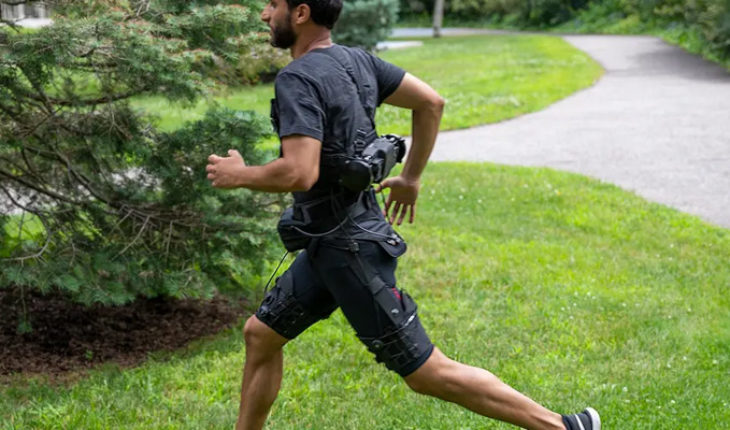Photography/
World.- A team of researchers has developed a device capable of adapting to the management of its owner, in order to reduce the metabolic cost that entails locomotion. This advantage, equivalent to carrying up to 7 kg less weight, could be of great help to professions that involve great physical activity as rescue and military equipment workers.
The first bipedal ancestors of the human being emerged more than six million years ago, so we might think that this type of locomotion has already been completely optimized by nature. Nothing further from reality. A team of researchers from the U.S. and South Korea has developed a slight exosuit that allows its carrier to reduce the metabolic cost of walking and running. The study was published today in the journal Science.
This is the first system capable of helping both walking and running. Although we switch from one mode to another without problems, the biomechanics associated with each movement is very different. This has been a challenge for the development of such technologies, which until now were only able to reduce the metabolic cost of one of the processes.
This is the first system capable of helping both walking and running
“Metabolic reduction is modest, but assisting in more than one type of activity is a new milestone for this type of device,” University of Nebraska Omaha (USA) researcher and co-author of the study, Philippe Malcolm, explains to Sinc.
The exosuit, which weighs about 5 kilograms, is able to adapt to the user’s gait to provide adequate assistance, both when walking and running. This reduces the metabolic cost by 9.3 and 4 %, respectively. In other words, this would equate to its carrier moving at 7.4 and 5.7 kilograms less, respectively.
To determine the usefulness of their creation, the researchers measured the metabolic costs of nine participants who ran and walked on a ribbon, and another who did it uphill.
“The (user’s) performance was good during outdoor testing,” Says Malcolm. “We can hope that the device will help with performance in a way proportional to how it reduces the metabolic cost, but this is not something we have analyzed in this study.”
Artificial muscles to walk better
Malcolm explains that walking is a “metabolically very economical” process, because “our center of mass moves like a reverse pendulum.” However, muscles such as those in the hip and buttocks consume a “considerable” amount of energy during movement. This is where the exosuit comes in.
“The cables (of the device) are placed around the hip and act as an extra collection of artificial muscles capable of producing a small portion of the torsion that the extender muscles would produce.” This help is used to reduce the metabolic cost of movement for the user.
This exosuit is equivalent to ‘removing’ 7.4 kilograms while running and 5.7 while running
Researchers estimate that this reduction is equivalent to ‘removing’ 7.4 kilograms while running and 5.7 while running. Malcolm clarifies that these figures are obtained by comparing the reduction in metabolic cost with the ‘lost’ weight that would amount to that decrease.
“The comparison is made for the reduction to be understood,” he adds, due to the difficulty of understanding what this decrease means as a percentage on the metabolic cost.
A robotic suit for military and patients
Why would anyone need a walking suit? Malcolm explains that the invention “could be useful in professions that require walking fast or for a long time.” For example, “rescue and military equipment workers”.
The researcher claims that the technology that allows the exosuit to be anchored to the body and tells you how to act and adapt to the user’s passage could also be used for clinical purposes. In fact, Harvard University researcher and co-author of the study, Conor Walsh, also develops a device for the rehabilitation of stroke patients.
Walsh’s team also studies how to make their devices support the user’s back during arduous tasks. For example, when lifting large weights. In addition, they seek to lighten the weight of the exosuit to 3 kilograms.
Source: Sinc
translated from Spanish: Create a robotic suit that helps their wearer walk and run
August 18, 2019 |





